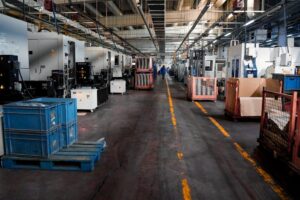How Real-Time Rendering Is Revolutionizing Video Production
In the rapidly evolving world of video production, technology continually shapes the way content is created, refined, and delivered. One of the most transformative advancements is real-time rendering. This technology is drastically changing video workflows by enabling immediate visualization and reducing the traditionally long production cycles.
In this comprehensive article, we’ll explore how real-time rendering is revolutionizing video production – breaking down its key benefits, practical applications, notable industry case studies, and tips for leveraging this cutting-edge technology.
What Is Real-Time Rendering?
Real-time rendering refers to the process of generating images or video frames instantly, as the scene is manipulated or viewed, using powerful graphics processing units (GPUs) and optimized software. Unlike pre-rendered graphics that require minutes or hours to produce, real-time rendering offers immediate feedback, enabling creators to see the final output live.
This technology has its roots in video games but has since become essential in film, animation, virtual production, and augmented/virtual reality (AR/VR) environments.
Why Real-Time Rendering Matters in Video Production
Traditional video production often involves multiple stages of rendering, editing, and compositing, which can lengthen the timeline significantly. Real-time rendering disrupts this model by:
- Speeding up the production workflow: Immediate visualization means faster decision-making and fewer costly revisions.
- Enhancing creative flexibility: Directors and artists can experiment dynamically with lighting, camera angles, and visual effects.
- Lowering production costs: Reduced render times decrease the need for expensive hardware and long studio hours.
- Enabling remote collaboration: Teams can simultaneously view and adjust scenes in real time, even from different locations.
Key Benefits of Real-Time Rendering for Video Production
| Benefit | Description | Impact |
|---|---|---|
| Instant Feedback | Visualize scenes and effects as they happen without waiting for renders. | Accelerates creativity and reduces iterations. |
| Realistic Visuals | Advanced shading, lighting, and physics simulate real-world conditions accurately. | Improves audience immersion and production value. |
| Cost Efficiency | Less reliance on costly render farms and prolonged studio usage. | Optimizes production budgets. |
| Remote Collaboration | Multiple stakeholders can view and tweak projects live online. | Enhances team synergy and streamlines approvals. |
Practical Tips for Leveraging Real-Time Rendering in Your Video Projects
- Choose the Right Software: Platforms like Unreal Engine, Unity, and Blender have robust real-time rendering capabilities tailored to video production needs.
- Invest in High-Performance Hardware: A powerful GPU and ample RAM are essential to handle intensive real-time rendering loads smoothly.
- Master Real-Time Lighting Techniques: Experiment with dynamic lighting setups to maximize realism and mood instantly.
- Incorporate Virtual Production: Use real-time rendering with LED volumes and green screen setups to blend CGI and live footage live on set.
- Train Your Team: Familiarize creatives and editors with real-time tools for seamless integration into workflows.
Case Studies: Real-Time Rendering in Action
1. The Mandalorian (Lucasfilm)
One of the most famous examples of real-time rendering’s impact is the acclaimed series The Mandalorian. The production team employed real-time rendering on LED walls powered by Unreal Engine, allowing actors to perform in immersive CGI environments without post-production compositing. This revolutionary method enhanced visual quality and shortened production cycles.
2. Netflix’s Virtual Ad Campaigns
Netflix has leveraged real-time rendering to create engaging virtual advertisements that respond to user behavior in real time. By rendering complex scenes instantly, Netflix delivers personalized, high-quality visuals at scale with reduced production time.
3. Architectural Visualization and Video Walkthroughs
Architects are using real-time rendering for photorealistic walkthrough videos, helping clients visualize projects before construction starts. The immediate feedback loop allows iterative improvements and better client satisfaction.
Firsthand Experience: Embracing Real-Time Rendering
As a video producer integrating real-time rendering technology into my workflow, the benefits became clear very quickly:
- Faster Iterations: Instead of waiting hours for scene renders, decisions were made on the spot, cutting production times nearly in half.
- Enhanced Creativity: Real-time lighting and effects adjustments encouraged experimentation that wouldn’t have been feasible with traditional post-production timelines.
- Better Client Engagement: Clients loved seeing instantaneous changes, leading to more efficient feedback loops and buy-in.
- Streamlined Collaboration: Teams working remotely could simultaneously view scenes and provide input, significantly improving communication.
What the Future Holds for Real-Time Rendering in Video Production
The trajectory of real-time rendering points to even more exciting possibilities:
- AI-Enhanced Rendering: Integration with artificial intelligence will further speed up processes and automize complex visual effects tasks.
- Cloud-Based Real-Time Solutions: Increased cloud computing power will make real-time rendering accessible even to smaller production houses without expensive local hardware.
- Deeper AR & VR Integration: Seamlessly merging virtual content with live-action footage will create more immersive storytelling formats.
- Expanding Democratization: More affordable, user-friendly tools will enable independent creators to adopt real-time rendering for professional-quality videos.
Conclusion
Real-time rendering has undeniably transformed the landscape of video production by breaking down traditional barriers of time, cost, and creative limitation. From streaming epics like The Mandalorian to agile virtual campaigns and architectural visualizations, this technology enhances workflows while unleashing new creative possibilities.
For video professionals and enthusiasts looking to future-proof their productions, embracing real-time rendering isn’t just an option – it’s becoming a necessity. By understanding its benefits, investing in the right tools, and keeping an eye on evolving trends, creators can harness this revolution to produce stunning, immersive, and timely video content that captivates audiences worldwide.











